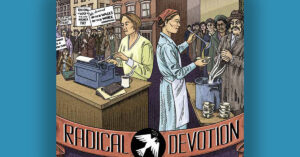In a previous post, we had a look at the ruins of a Franciscan friary in County Donegal, Ireland. In this post I want to look at some Franciscan friary ruins in England. The Franciscans have quite a history in England, and we will look at this too.
The Franciscan Order arrives in England

Our Seraphic Father, St. Francis himself made the decision to send a group of friars to open a mission in England. The little band was led by Friar Agnellus – known to-day as Blessed Agnellus of Pisa. They arrived in Dover, England on, we believe, the 11th September, 1224. The first friary was opened in Canterbury.
Greyfriars
The English people took kindly to the Franciscan charism, and the Order soon spread rapidly throughout the country. Because of the distinctive colour of their habit, the friars became popularly known as Greyfriars.
The name Greyfriars would also distinguish the Franciscans from other mendicants, such as the Whitefriars (Carmelites) and the Blackfriars (Dominicans). By the way, these names remain very common all over England up to the present day – the names turn up not just in ruins, but also in every-day place names.
Destruction of the Religious Houses

Religious life flourished throughout mediaeval England, both monastic and mendicant. Sadly, this would all come to an end with King Henry VIII. It’s a complicated story, and we have already touched on it in previous posts. King Henry wanted to get his way with Anne Bolyen, and he needed the support of powerful and influential men in his kingdom. These men wanted land and money in return for their help, and what better means for the king to give it to them than by confiscating church land and distributing it amongst them? In order to pay off these characters, Henry first of all suppressed the smaller religious houses, and later he did the same with the larger ones. The houses were destroyed, their contents were sold, and the land confiscated and distributed. After the foul business was over, monastic and mendicant life had come to an end in England – together with all the charitable works that these religious men and women provided for the needy, local inhabitants.
To-day, all that remains of these religious houses are ruins at best; in many cases nothing remains at all.
– friar Solanus Mary OFM Conv.
In part two, friar Solanus Mary will take us to the counties of Norfolk and Suffolk where many monastic and Franciscan ruins can be found.



